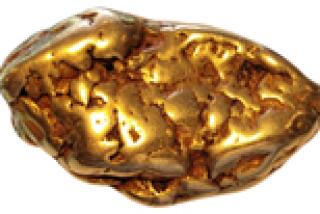Back on Track : Forgotten Train Car Turns Out to Be a Nugget of Americana
- Share via
The Little Nugget lived only 20 years. Then it fell into a purgatory for 30 more.
Donated in 1956 to the city it had served, the Little Nugget was abandoned to a sidetrack in Travel Town. Children tromped through it by day; vandals and squatters stole in by night. Sunlight unsealed its exterior. Rain seeped in. Paintings, molded cherubs, brass sconces, Victorian lounge chairs disappeared.
Then, about two years ago, the American Southwestern Railway Assn. stepped in. Some of its members decided that they could no longer stand idle while the most lavish railroad car of its day crept into ignominy. They set about to restore it.
Thus began a job that has tantalizingly grown larger with every step it has moved ahead. It’s grown in duration, in cost, in complexity. On the happier side, it’s also grown in its sense of historical mission.
At first, the group of about 20 railroad buffs merely thought of the Nugget as an important piece of railroad lore. It had been the lounge car on Union Pacific’s City of Los Angeles Streamliner that worked the Chicago-California route from 1937 to 1956.
“We knew it was a fairly well-known railroad car and was nice looking,” said Nancy Jessup, the group’s fund-raiser. “Then, when we really got into it and discovered the whole Walter Kuhn business, we found out it was a piece of Americana. We think of it as a work of art.”
Kuhn was a noted American painter and designer. Union Pacific commissioned him to make one car stand out in almost comic contrast to the cool Art Deco lines of the 14-car City of Los Angeles. The idea was to create an 1880s Old West dance hall.
Kuhn threw himself into the job for more than a year, making it his masterpiece. He selected the drapery fabrics, the paint colors and hardware styles.
“Mr. Kuhn was quite the perfectionist,” Jessup said.
He gave the Little Nugget rococo chairs and sofas, brass gaslight fixtures, embroidered lace curtains, velvet drapes and a cherub-studded bar. On its walls he put paintings, drawings and photographs of vaudeville performers, clowns, dancers and jockeys.
Kuhn even gave the Nugget its name and painted 35 of its illustrations.
The Little Nugget remains the only surviving example of Kuhn’s railroad work, said Greg Gneier, historian for the project.
Gneier, a Hollywood studio designer, discovered the “Kuhn business” on microfilm. He obtained it from the Smithsonian Institution, which has preserved the exhaustive correspondence in which Kuhn can be seen tending to the smallest detail, including the ordering of individual parts.
Two Saturdays a month now, three to six members of the team show up at the faded yellow-and-gray Union Pacific car, where they find themselves tracing Kuhn’s steps quite literally. With a party invariably in progress in the next car over, they sand, they scrape, they hammer and paint. They fret over the rigors of historical purity. Is it legitimate, they ask, to re-secure a ceiling panel with a row of Phillips screws of which not one was used in the original Little Nugget?
Screws Scavenged
Gneier said the problem came up when he learned that slotted screws are no longer manufactured in the shape he needed. So far, he’s solved it by scavenging screws from one side of the car to finish off the other.
Someday the question must be faced.
Meanwhile, the project moves ahead on faith, sweat and ingenuity, a combination that has had some success. In their first look at the car, the restorers found only one of the nearly two dozen fanciful, velvet-covered chairs that lined both sides of the Nugget.
There were rumors that city employees carted off most of them.
“We’ve been knocking on doors and making phone calls,” Gneier said. “One day, these two chairs appeared.”
Gneier hopes that more will turn up. Those that don’t will have to be replaced, at several hundred dollars per chair.
Gneier has had better luck in reincarnating manufactured goods from the ‘30s.
He wrote to Harrington & King Perforating Co. in Chicago, hoping to find perforated metal vent covers.
“The guy said they still had one little old man there who knew how to operate the machines,” he said. “They had to pull out all the tooling.”
The same company cast the cherubs hung above the light fixtures. Someone has been assigned to dig through an old warehouse to find the mold.
Cherubs Recast
The small cherubs on the bar were simply recast from the one that remained. One member of the team now works at home, carving in the fine detail.
Another works at home sewing drapes from the 200 yards of velour sent by Collins & Aikman, the company that manufactured the originals.
Someday, the artists on the team may find themselves copying the original Kuhn paintings from a photograph. All but two disappeared.
“For all we know, they could be in a bar somewhere,” Jessup said. “We’re hoping the city has them stuck in a warehouse. If nothing else, we will repaint them and say, ‘This is what Mr. Kuhn’s paintings looked like.’ ”
Still other items will be easy to replace, as soon as funds arrive. Little yellow signs in the car identify them:
“Cost of replacing lamp globes (29) $175,” one says.
Another, slightly more intimidating, says: “Cost of replacing carpet with original ‘cabbage rose’ design, $4,500-$7,000.”
The Work Ahead
That purchase lies well in the future, and may cost even more. More immediate, and lowly, tasks allow plenty of time for dreaming.
On Saturday, Jessup rubbed Ditz-O wax and grease remover onto a dirty aluminum strip that came off a door. As she worked, she contemplated the ways of making money.
“Since this was the lounge car, everybody who was in it smoked,” she said. Their smoke left a deep residue that oozed with every shot of cleanser.
“I think maybe we should call 409 and have them come out and do a commercial,” Jessup said.
More to Read
Sign up for The Wild
We’ll help you find the best places to hike, bike and run, as well as the perfect silent spots for meditation and yoga.
You may occasionally receive promotional content from the Los Angeles Times.







